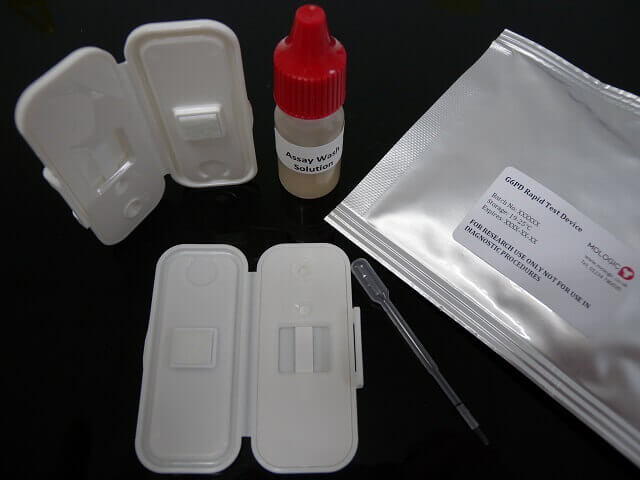Preparing the ground in the Brazilian Amazon for a new antimalarial to reduce relapse
Tackling malaria in the Brazilian Amazon has proved challenging. But furtunetly, a solution could be in sight.
Authored by Elodie Jambert & Elizabeth Poll, Medicines for Malaria Venture, Switzerland; Panayota Bird, GSK; and Dr Marcus Lacerda, Fiocruz, Brazil
The Amazon is a renowned hotspot for biodiversity, but it’s also a hotspot for malaria. Brazil is one of the Latin American countries with the heaviest
burden of malaria, with its Amazon region accounting for 99.5 percent of all national cases.
Tackling malaria in Brazil is complicated by the fact that the vast majority of the burden is caused by the malaria parasite Plasmodium vivax.
After causing an initial bout of malaria symptoms, this species of parasite has the ability to hide dormant in the liver of infected people, only to
re-emerge and cause symptoms again several weeks to several months after initial infection. Another compounding issue is that the only medicine currently
available to stop such relapse is primaquine–a medicine approved in the 1950s that must be taken for at least seven days. Given this lengthy course
of treatment, many patients fail to complete the full course. It’s a challenge to explain to patients why they should take seven days of pills to treat
something that appears to have resolved after the third day (the duration of treatment of the initial acute P. vivax malaria bout). As a result,
the medicine often doesn’t work, and transmission of relapsing malaria is perpetuated.
In Brazil, over the last 20 years, the burden of the more deadly Plasmodium falciparum has fallen from 50 to 10−15 percent. Yet, progress against P. vivax is yet to see the same success; this parasite now causes 89 percent of malaria cases. While P. vivax doesn’t kill as many people as P. falciparum, it is still debilitating, can also be lethal, and has substantial economic impact on families and nations. As such, it’s important to keep the attention of policymakers focused on malaria even in the face of other pressing public health issues, such as Zika and chikungunya viruses.
A new solution for relapsing P. vivax in sight
 Children in the village of Boa Vista, on the border of the Juma Reserve in the Brazilian Amazon. Photo: Neil Palmer/CIAT
Children in the village of Boa Vista, on the border of the Juma Reserve in the Brazilian Amazon. Photo: Neil Palmer/CIAT
Fortunately, a new solution to tackle relapsing P. vivax malaria could be in sight. Medicines for Malaria Venture (MMV) and GSK have collaborated to develop a new, single-dose anti-relapse medicine, tafenoquine. The medicine was submitted for regulatory review to the US Food and Drug Administration and Australian Therapeutic Goods Administration at the end of 2017. If approved, it could be an important new treatment for individuals suffering from relapsing malaria, and could help to eliminate the disease in the Amazon.
MMV and GSK have developed an access strategy together with in-country partners and are preparing the ground for the medicine’s potential launch in endemic countries. Country-level briefings are ongoing with the National Malaria Control Programmes (NMCP) in Brazil and six other endemic countries (Thailand, Ethiopia, Vietnam, Cambodia, Peru, and Colombia); their goal is to assess interest in introducing the new medicine into national practice and to understand what type of evidence NMCPs would need to support policy adoption.
Developing diagnostics to make anti-relapse medicines safer for all
 PATH rapid diagnostic test to support treatment and elimination of P. vivax. Photo: PATHIntroduction of tafenoquine faces one additional challenge: As is the case with primaquine, people with a genetic deficiency in a specific enzyme known
as glucose-6-phosphate dehydrogenase (G6PD) can suffer potentially serious side effects. On average, 8 percent of people in malaria-endemic countries are deficient in this enzyme. To reduce the risk of patients suffering this side
effect, PATH is supporting development of a point-of-care diagnostic test to identify patients’ G6PD status and determine whether tafenoquine or primaquine
can be safely administered. Concomitant use of this point-of-care diagnostic test will be critical for the correct and well-tolerated use of tafenoquine.
Despite the World Health Organization’s recommendation that G6PD tests guide the use of primaquine, few endemic countries routinely use such testing
today.
PATH rapid diagnostic test to support treatment and elimination of P. vivax. Photo: PATHIntroduction of tafenoquine faces one additional challenge: As is the case with primaquine, people with a genetic deficiency in a specific enzyme known
as glucose-6-phosphate dehydrogenase (G6PD) can suffer potentially serious side effects. On average, 8 percent of people in malaria-endemic countries are deficient in this enzyme. To reduce the risk of patients suffering this side
effect, PATH is supporting development of a point-of-care diagnostic test to identify patients’ G6PD status and determine whether tafenoquine or primaquine
can be safely administered. Concomitant use of this point-of-care diagnostic test will be critical for the correct and well-tolerated use of tafenoquine.
Despite the World Health Organization’s recommendation that G6PD tests guide the use of primaquine, few endemic countries routinely use such testing
today.
In Brazil, the prevalence of G6PD deficiency varies depending on the immigration profile of the region. Most published papers on the subject estimate that the average prevalence among men in Brazil is around 5 percent, a statistic recently confirmed with preliminary data from a government-supported prevalence survey in endemic areas of the Brazilian Amazon.
In light of this, additional data is being gathered. Initial preparations for an implementation study are underway in Brazil to demonstrate how a quantitative G6PD test would work in practice, prior to use of tafenoquine in the healthcare system. It is planned for the study to begin after regulatory approval of tafenoquine is granted. The team is also working with academics to model the cost effectiveness of the medicine paired with a G6PD test compared to current standard of care (primaquine without a test), as well as the potential impact of tafenoquine on malaria transmission and elimination. The Brazilian government will use these findings as it considers broader deployment of the intervention throughout malaria-endemic areas.
Tafenoquine has potential for significant impact both for the individuals that suffer from this disease as well as for the regions focused on malaria elimination. We await the regulatory decisions on the medicine and will continue to work together as a team of partners to prepare the ground in the Brazilian Amazon to help make it malaria-free for all.
